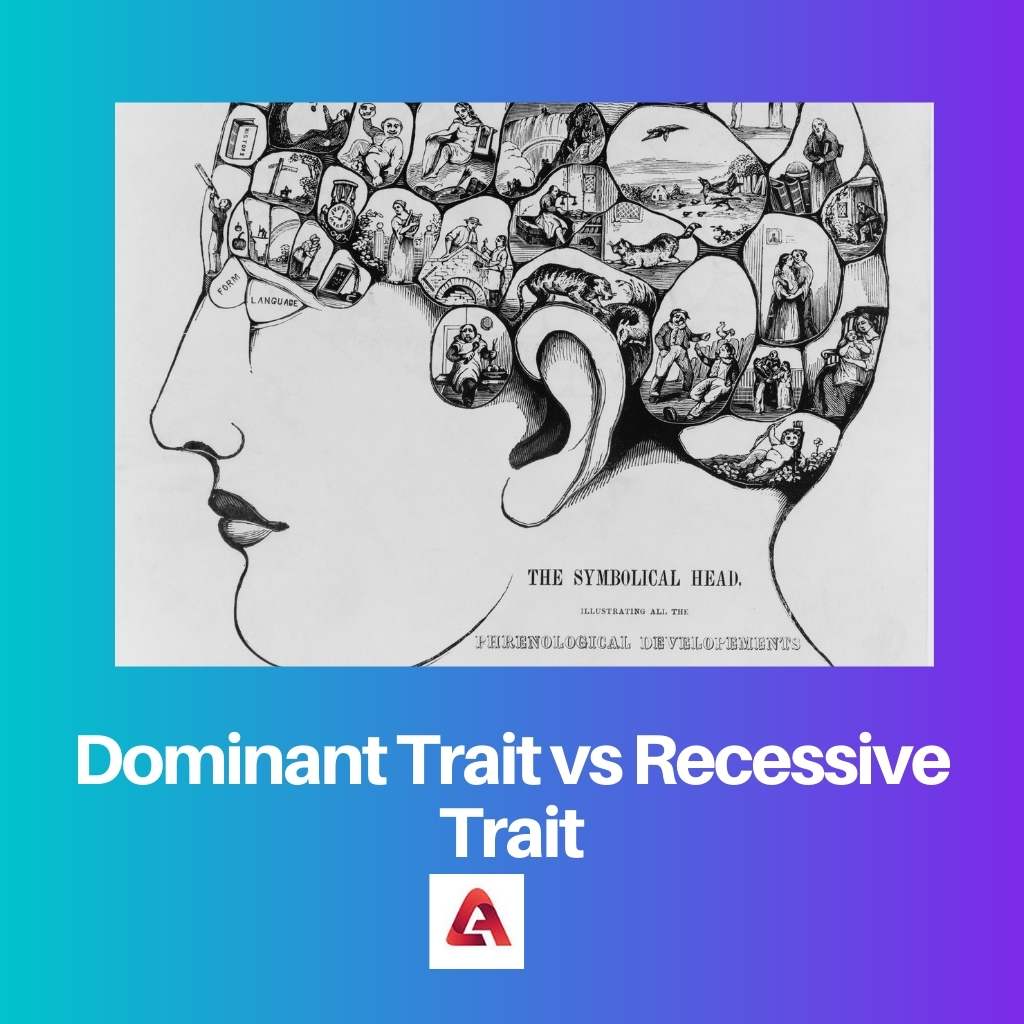The basic science of heredity, genes, and all the major and basic differences between living organisms is genetics.
Genetics is nothing but a discipline that has a proper biological explanation, and in that explanation, it deals with the functioning and the structure of genes, their different behaviours, their patterns of difference in those behaviours, and the pattern of their inheritance of getting those genes from the parents.
What happens in humans is while they are formed by the union of sperm and the egg cells of both parents, a diploid cell is formed. That diploid cell has the necessary genetic materials in it.
Key Takeaways
- Dominant traits require only one copy of the gene to be expressed, while recessive traits need two copies for expression.
- Recessive traits can be carried by an individual without being expressed, allowing them to be passed on to future generations.
- Genetic testing and pedigree analysis can help determine the likelihood of inheriting or passing on dominant or recessive traits.
Dominant Trait vs Recessive Trait
The difference between dominant and recessive trait is that dominant genes always passes the dominant behaviour genes while the recessive ones pass the recessive behaviour genes. In fact, the dominant genes are said to be more likely to pass to future generations, while the recessive ones are less likely to do that.

Dominant traits are basically those which occur in a person when they receive the dominant genes as offspring from the parent. They are expressed when the connected allele to it is dominant itself.
This also can happen even if there is only one single copy of it exists. That dominant allele is denoted by block letters.
Recessive traits are basically the opposite of dominant traits in all senses. These traits are expressed or received only in the case when both of the alleles are recessive.
If one of them has recessive genes, the possibilities are higher that the offspring wouldn’t get the same genes. Like one of them is recessive and the other one is dominant, there are chances that the result will manifest.
Comparison Table
| Parameters of comparison | Dominant Trait | Recessive Trait |
|---|---|---|
| Expression | Traits of dominance are expressed when the traits of the allele are also dominant. | Traits of recessiveness are expressed when the traits are the same with both of the alleles too. |
| Representation | The dominant allele is represented with block letters everywhere. | Recessive traits are represented by small letters. |
| Examples | v-shaped hairline, dark hair color, brown eye color, right-handedness, etc. | Round eyes, left-handedness, straight hairline, the blonde or red color of hair, etc. |
| Requirement | The dominant trait does not require the presence of the same trait in the other gene too. | The recessive trait does require the presence of the same trait in the other gene to be inherited. |
| Inheritance | Gene with dominant traits is much more likely to be inherited. | Gene with recessive traits is comparatively less likely to be inherited. |
What is Dominant Trait?
A dominant trait is a characteristic of inheritance that appears in the offspring when they receive the dominant genes from the parent through the dominant allele.
Phenotypes, the other name of traits, might include some other features than just the behaviour like the color of the eye, hair, immunity level, or even certain decease, or even any facial features like dimples, freckles, moles, or anything.
Talking about the species that reproduce sexually, each of the individuals has 23 sets of chromosomes, hence making it 46 chromosomes.
Those 46 chromosomes constrain thousands of different genes, which ultimately are seen expressed in all the biochemical and even physical features of the offspring, and this set of whole genes and their features is called genotypes.

What is a Recessive Trait?
Recessive traits are the traits when an organism receives when both of the alleles are recessive.
Traits are basically nothing but some characteristics of an organism that can be observed or seen, plus they include physical features as well, like the color of the eye, hair color, and some of the characteristics that might not be apparent for some but are present there.
For every organism, it’s a basic process where they organize their DNA into chromosomes and have two alleles that decide the trait in their offspring. These are the alleles that can be either dominant or recessive.
A recessive trait is only received when both of the alleles are of the same nature, i.e., recessive only because if one of them is dominant, there are high chance that the offspring might not get the recessive trait.

Main Difference Between Dominant and Recessive Traits
- The main differences between dominant and recessive traits are that Traits of dominance are expressed when the traits of the allele are also dominant, while the traits of recessiveness are expressed when the traits are the same with both of the alleles too.
- The dominant allele is represented with block letters everywhere, while Recessive traits are represented by small letters.
- V-shaped hairline, dark hair color, brown eye color, right-handedness, etc., are examples of dominant traits in humans, while round eyes, left-handedness, straight hairline, the blonde or red color of hair, etc., are the examples of recessive traits in humans.
- The dominant trait does not require the presence of the same trait in the other gene, too, while the recessive trait does require the presence of the same trait in the other gene to be inherited.
- The gene with dominant traits is much more likely to be inherited, whereas the gene with recessive traits is comparatively less likely to be inherited.



